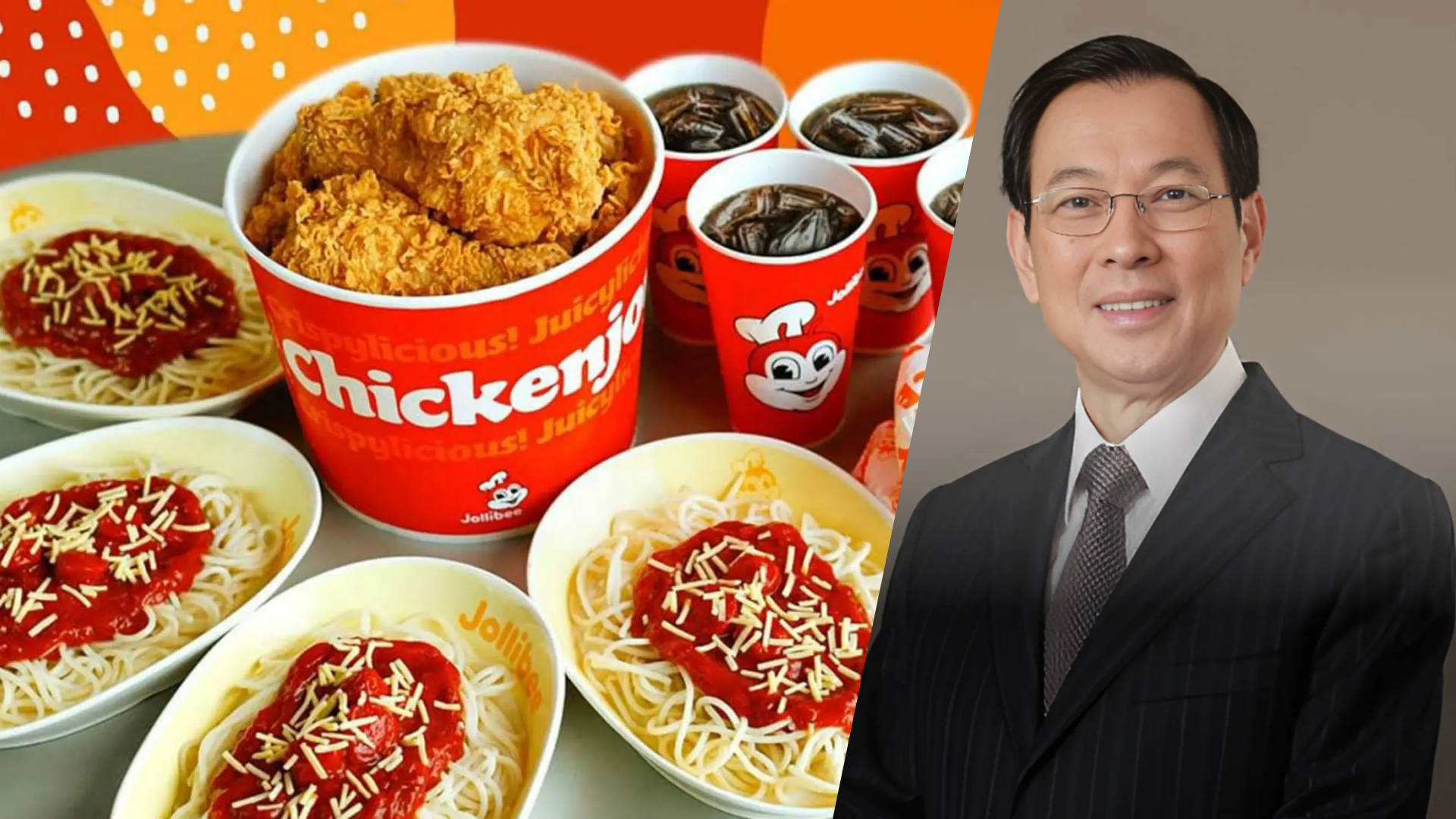


When a new Jollibee opens overseas, the lines start hours before the doors open.
Families bring lawn chairs. Friends take selfies with the bee mascot. Some drive in from nearby cities just to be first in line for Chickenjoy, sweet spaghetti, and peach mango pie.
Back home in the Philippines, Jollibee is the post-church treat, the staple on the birthday spread, and late-night comfort for nurses, students, and drivers.
For millions of Filipinos around the world, it is tradition and a taste of home that now spans 34 countries.
Today, Jollibee is a $6.2B giant with over 6,600 stores worldwide. But this food empire did not start with its signature fried chicken, spaghetti, or the ambition to go global.
It began as a single Magnolia ice cream shop franchise run by 22-year-old Tony Tan Caktiong and his family.
🍗 Winner winner chicken dinner
It all started in 1975. Tony and his family opened their Magnolia ice cream shop. Business was steady with cold treats for hot Philippine afternoons. But soon, customers began asking for hot, filling food: burgers, spaghetti, and fried chicken.
Instead of ignoring these requests, they started testing hot meals on the side. The new dishes quickly outsold ice cream and flipped daily sales on their head. It was an obvious success.
Their success forced a hard choice. To truly serve what people wanted, Tony and his family had to drop the franchise. It was a huge move for a small business without a safety net, but they decided to jump.
In 1978, Jollibee launched its own menu built for Filipino tastes: sweet-style spaghetti with banana ketchup and sliced hotdogs, crispy fried chicken with rich gravy, and burgers with a hint of sugar in the sauce.
The single outlet quickly became a staple. Families, office workers, and church groups made Jollibee part of their routines and word spread.
💥 Who’s gonna win?
By 1981, Jollibee had five branches. But just as things were picking up, McDonald’s arrived in the Philippines, powered by global resources and a proven system. Most assumed the homegrown brand wouldn’t be able to compete.
But Tony responded by sending a team to Hong Kong to study McDonald’s operations, not to copy, but to learn. Back home, Jollibee focused on faster prep times, cleaner dining areas, and centralized commissaries to guarantee every Chickenjoy tasted familiar, wherever you ate.
This was more than just an upgrade.
It was a bet that operational discipline could keep real Filipino flavor alive. By the late 1980s, Jollibee overtook McDonald’s, proving that listening to local tastes and building systems around them was the winning formula.
🍴 All about expansion
Jollibee did not stop at chicken and burgers. In the 1990s and 2000s, it acquired beloved Filipino brands: Chowking, Greenwich, Red Ribbon, and Mang Inasal.
Each plugged into Jollibee’s commissaries, supply chain, and staff training, scaling up without losing character.
Growth was not effortless. Expansion led to service hiccups, supply gaps, and customer complaints. Jollibee sometimes paused new store launches, expanded commissary capacity, and rolled out unified training and audits. Consistency and loyalty always came first.
🇵🇭 Global with a Filipino heart
Jollibee’s global ambitions were always about Filipinos abroad, longing for a taste of home. Early expansions targeted Saudi Arabia, Hong Kong, and the United States, places with large Filipino communities.
Some overseas launches clicked instantly. In the Middle East, Jollibee became a weekend ritual. In American cities like Daly City and Queens, lines wrapped around the block for opening day. Menus stayed familiar, staff were often Filipino, and each city taught Jollibee something new. Drive-thrus, digital ordering, and local crews made every store a neighborhood hit.
China was a different story. Jollibee entered in 1998 but struggled to gain traction.
Taste preferences were different and there was local competition, including the Jollibee copycat JoyRulBee. After a few years, they scaled back in China.
Still, by 2020, Jollibee ran 500 stores overseas and was winning new fans beyond its core Filipino crowd.
😱 Resetting and reinventing in crisis
The 2020 pandemic was Jollibee’s hardest challenge yet. Losses climbed over $240M, stores closed, supply chains buckled, and global plans stalled.
The company responded quickly. It opened delivery-only kitchens, ramped up digital orders, trimmed weak stores, and made its international divisions leaner.
And by 2022, Jollibee returned to profit and by 2023, revenue hit all-time highs.
🏆 A Timeless Filipino icon
By 2025, Jollibee ran more than 6,600 stores in 34 countries and was valued at over $6.2B.
Its empire now spans coffee shops, bakeries, pizza chains, and franchises like Coffee Bean & Tea Leaf and Singapore’s Tiong Bahru Bakery. In the Philippines, Jollibee continues to outsell McDonald’s, showing the power of knowing the market and staying true to its roots.
What started with ice cream in a small Manila shop became an empire built on adaptation, discipline, and fiercely protected tradition.
For every Filipino abroad and every family back home, Jollibee is more than fast food. It is a taste of home and proof that listening and taking the leap can transform a business.

The newsletter that keeps you up-to-date on the top stories on tech and business in Southeast Asia. It's fun, quick and free.